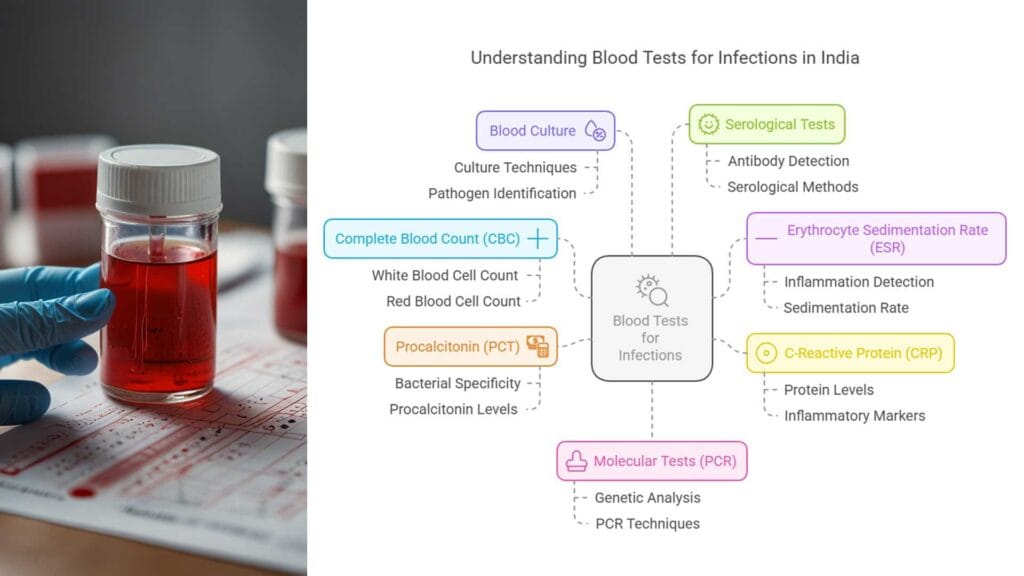We all know how common infections can be in India, from the common cold and flu to more serious illnesses like dengue, malaria, typhoid, and tuberculosis. Thankfully, modern medicine has given us powerful tools to quickly diagnose these infections: blood tests.
- Why Are Blood Tests Important for Detecting Infections?
- Common Blood Tests for Infections in India: A Detailed Breakdown
- 1. Complete Blood Count (CBC) – The Foundation
- 2. Erythrocyte Sedimentation Rate (ESR) – Measuring Inflammation
- 3. C-Reactive Protein (CRP) – Another Inflammation Marker
- 4. Procalcitonin (PCT) – A More Specific Marker for Bacterial Infections
- 5. Blood Culture – Identifying the Culprit
- 6. Serological Tests – Detecting Antibodies
- 7. Molecular Tests (PCR) – Detecting the Pathogen's Genetic Material
- Understanding Your Test Results: Important Considerations
This article is your friendly guide to understanding the various types of blood tests used to detect infections. We’ll break down the complicated medical jargon into simple terms, explain what each test measures, and why it’s important. We’ll also touch upon common test names you might see on your lab reports in India. Think of this as your one-stop resource for understanding your blood work!
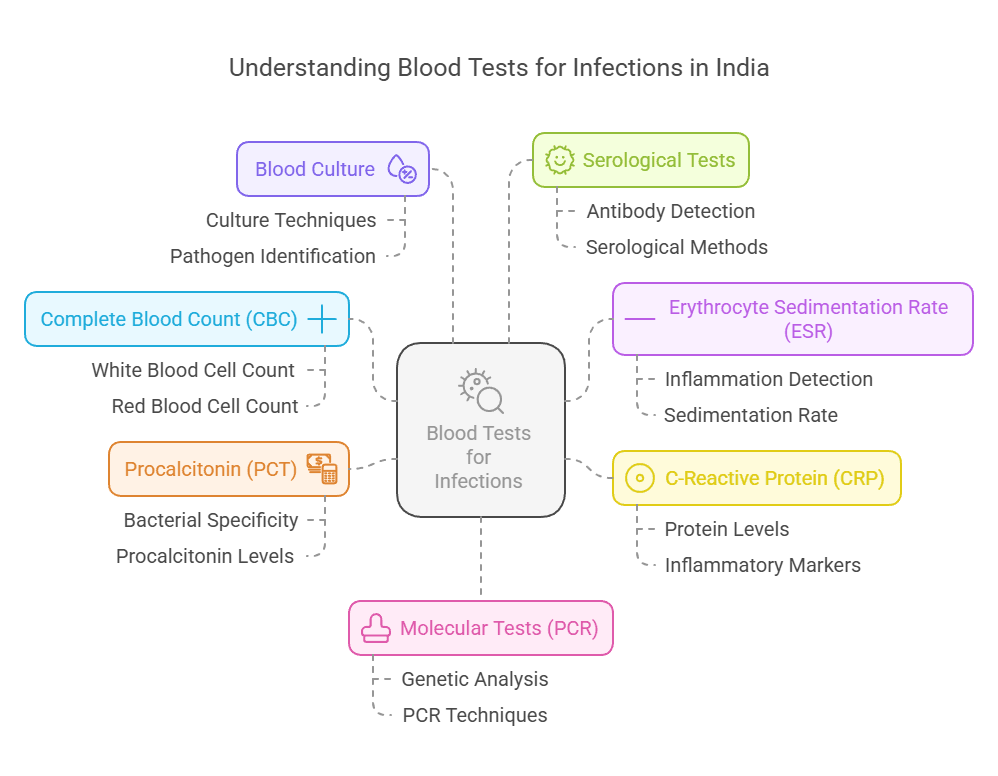
Why Are Blood Tests Important for Detecting Infections?
Before we dive into the specific tests, let’s understand why blood tests are so crucial. When you have an infection, your body’s immune system goes into battle mode. It releases various substances into your bloodstream, including:
- White Blood Cells (WBCs): These are your body’s infection-fighting soldiers. Different types of WBCs increase in response to different types of infections.
- Antibodies: These are proteins that specifically target and neutralize invading pathogens (like bacteria, viruses, or parasites).
- Inflammatory Markers: These are substances that indicate inflammation, a common response to infection.
- The Pathogens Themselves: In some cases, the actual bacteria, virus, or parasite causing the infection can be detected directly in the blood.
Blood tests analyze these components to provide doctors with a clear picture of what’s happening inside your body. They help to:
- Confirm an Infection: Determine if you actually have an infection, or if your symptoms are caused by something else.
- Identify the Type of Infection: Help pinpoint whether the infection is bacterial, viral, fungal, or parasitic. This is critical for choosing the right treatment.
- Assess the Severity of the Infection: Give an indication of how serious the infection is.
- Monitor Treatment Effectiveness: Check if the prescribed antibiotics or other medications are working.
- Rule Out Other Conditions: Sometimes, symptoms of infection can mimic other illnesses. Blood tests can help differentiate between them.
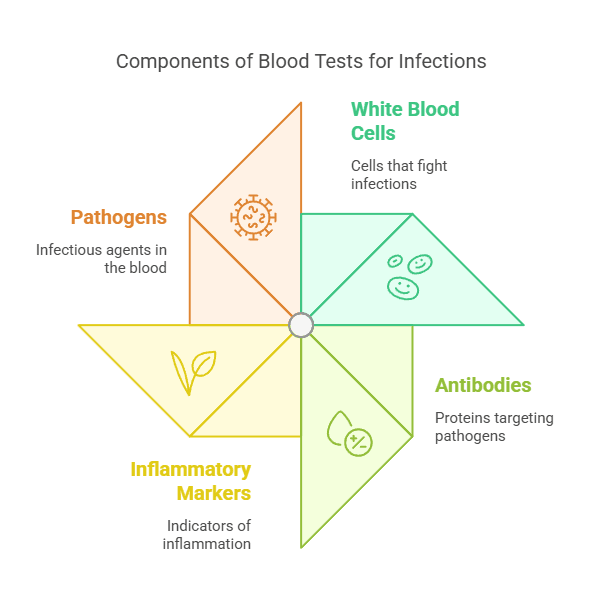
Common Blood Tests for Infections in India: A Detailed Breakdown
Now, let’s get into the specifics. Here are the most common blood tests used in India to detect infections, explained in a way that’s easy to understand:
1. Complete Blood Count (CBC) – The Foundation
The CBC is often the first test ordered. It’s like a general health check-up for your blood. It doesn’t specifically pinpoint the type of infection, but it provides valuable clues. A CBC measures several components, including:
White Blood Cell (WBC) Count:
Total WBC Count: An elevated total WBC count (leukocytosis) often indicates an infection. A very high count might suggest a serious bacterial infection. A low WBC count (leukopenia) can sometimes occur in severe infections or with certain viral infections.
Differential WBC Count: This breaks down the total WBC count into different types of white blood cells:
- Neutrophils: Usually increase in bacterial infections. A significant increase is called neutrophilia.
- Lymphocytes: Often increase in viral infections. An increase is called lymphocytosis.
- Monocytes: Can increase in various infections, including bacterial, viral, and fungal.
- Eosinophils: Typically increase in parasitic infections and allergic reactions. An increase is called eosinophilia.
- Basophils: The least common type of WBC; can increase in some infections and inflammatory conditions.
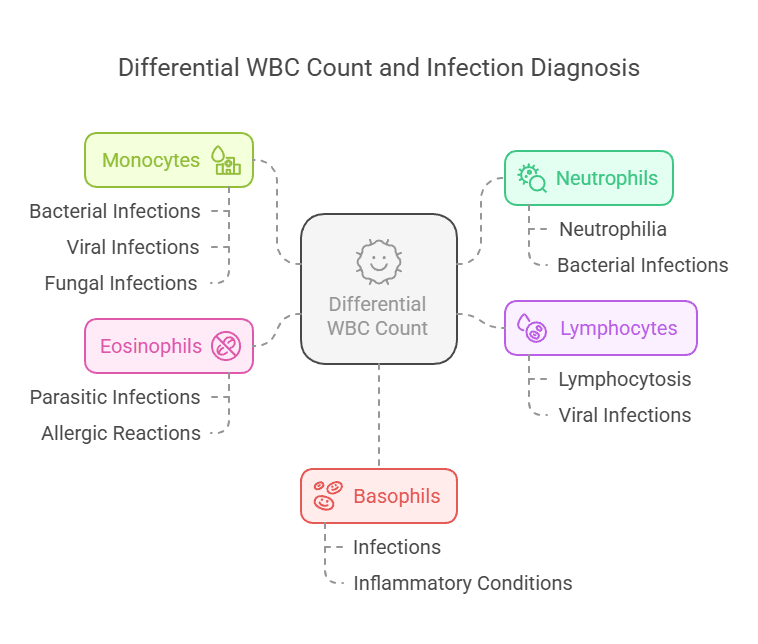
Red Blood Cell (RBC) Count, Hemoglobin (Hb), and Hematocrit (Hct):
While not directly related to infection detection, these values can sometimes be affected by severe infections or chronic illnesses. For example, anemia (low RBC count) can sometimes be a consequence of a long-standing infection.
Platelet Count: Platelets are involved in blood clotting. Some infections, like dengue, can cause a significant drop in platelet count (thrombocytopenia).
Common Indian Lab Report Terms: You might see terms like “TLC” (Total Leukocyte Count), “DLC” (Differential Leukocyte Count), “Hb,” “RBC,” and “Platelets” on your report.
2. Erythrocyte Sedimentation Rate (ESR) – Measuring Inflammation
The ESR test is a simple, non-specific test that measures how quickly red blood cells settle to the bottom of a test tube. Inflammation causes red blood cells to clump together and settle faster.
- What it indicates: An elevated ESR suggests inflammation in the body. While it doesn’t pinpoint the cause of the inflammation, it’s a useful indicator of infection, especially when combined with other tests.
- High ESR: Can be seen in bacterial infections, autoimmune diseases, and some cancers.
- Normal ESR: Doesn’t completely rule out infection, but makes it less likely.
Common Indian Lab Report Term: You’ll likely see this simply as “ESR.”
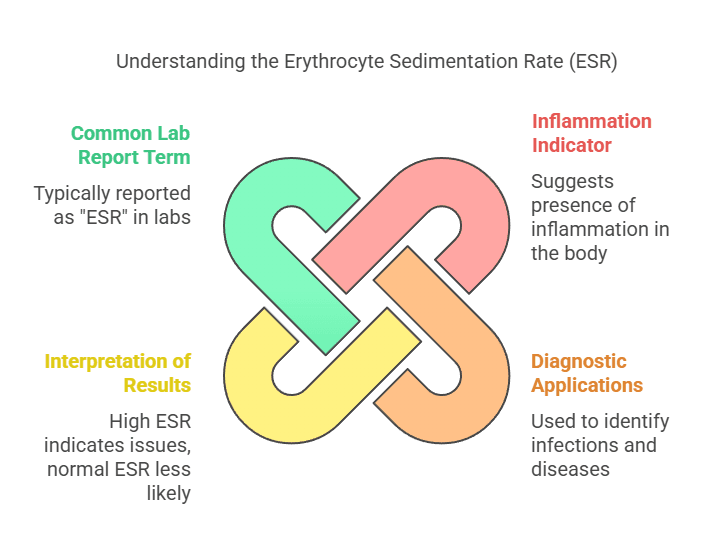
3. C-Reactive Protein (CRP) – Another Inflammation Marker
CRP is a protein produced by the liver in response to inflammation. It’s a more sensitive and specific marker of inflammation than ESR.
- What it indicates: Elevated CRP levels strongly suggest inflammation, often due to infection. CRP levels rise quickly after the onset of infection and fall rapidly as the infection resolves.
- High CRP: Often seen in bacterial infections. Can also be elevated in other inflammatory conditions.
- hs-CRP: A more sensitive version of the CRP test (high-sensitivity CRP) is sometimes used to assess the risk of heart disease, but it can also be helpful in detecting low-grade inflammation.
Common Indian Lab Report Term: Usually written as “CRP.”
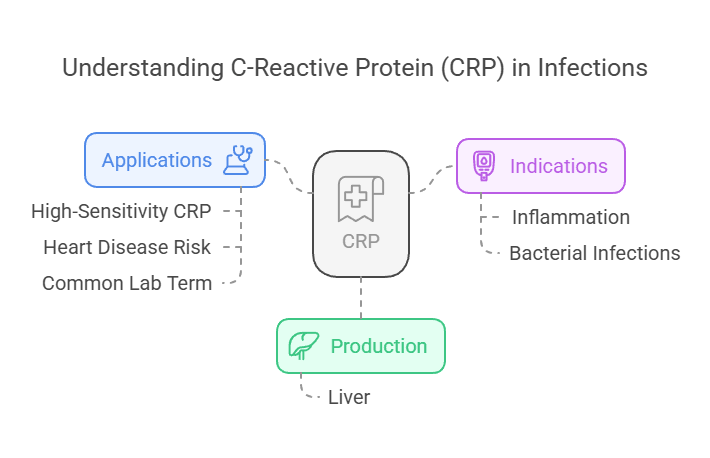
4. Procalcitonin (PCT) – A More Specific Marker for Bacterial Infections
Procalcitonin is a protein that is released in response to bacterial infections, particularly severe ones like sepsis (a life-threatening blood infection). It’s a more specific marker for bacterial infection than ESR or CRP.
- What it indicates: Elevated procalcitonin levels strongly suggest a bacterial infection, especially a systemic (widespread) infection.
- High PCT: Often seen in sepsis, severe pneumonia, and other serious bacterial infections.
- Low PCT: Makes a serious bacterial infection less likely. Can help doctors decide whether antibiotics are necessary.
Common Indian Lab Report Term: “PCT” or “Procalcitonin.”
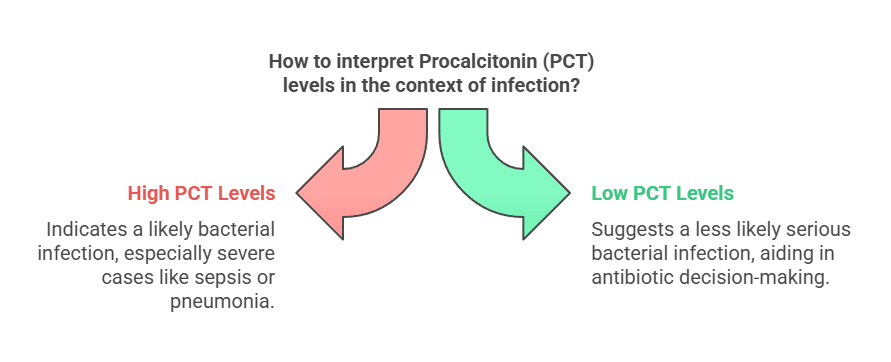
5. Blood Culture – Identifying the Culprit
A blood culture is the gold standard for diagnosing bloodstream infections (bacteremia or septicemia). It involves taking a blood sample and placing it in a special growth medium to see if any bacteria or fungi grow.
- What it indicates: If bacteria or fungi grow in the culture, it confirms the presence of a bloodstream infection and identifies the specific organism causing it.
- Sensitivity Testing: Once the organism is identified, further testing (antibiotic sensitivity testing) is done to determine which antibiotics will be most effective in treating the infection. This is crucial for preventing antibiotic resistance.
- Time Taken: Blood cultures typically take 24-72 hours to show results, as the bacteria need time to grow.
Common Indian Lab Report Term: “Blood Culture & Sensitivity” or “C&S.”
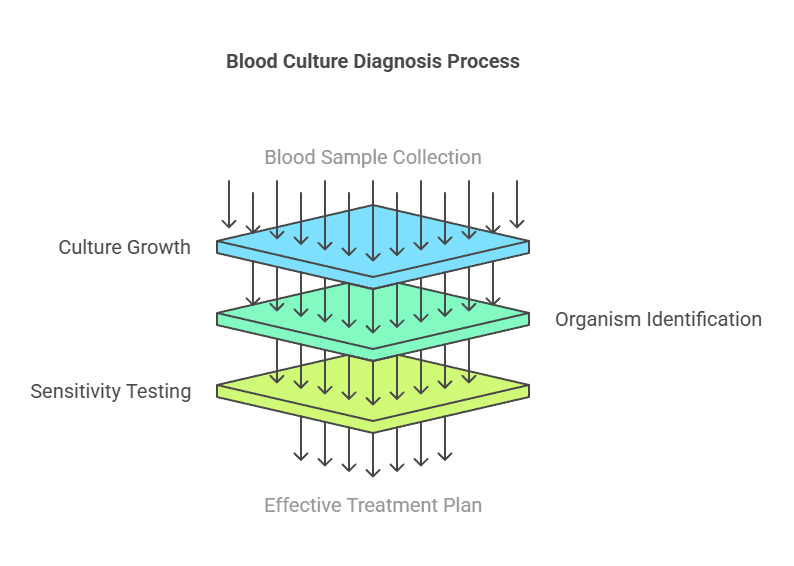
6. Serological Tests – Detecting Antibodies
Serological tests look for antibodies in the blood. Antibodies are produced by the immune system in response to specific infections. These tests are particularly useful for diagnosing:
- Viral Infections: Many viral infections, like HIV, hepatitis B and C, dengue, and chikungunya, are diagnosed primarily through serological tests.
- Past Infections: Some antibodies persist in the blood for a long time after an infection has resolved, providing evidence of past exposure.
- Autoimmune Diseases: Some serological tests detect antibodies that attack the body’s own tissues, which are characteristic of autoimmune diseases.
Common Examples (with Indian context):
- Widal Test: Used to detect antibodies against Salmonella typhi and Salmonella paratyphi, the bacteria that cause typhoid and paratyphoid fever. However, the Widal test has limitations and can sometimes give false-positive or false-negative results. It’s being increasingly replaced by more accurate tests.
- Dengue NS1 Antigen and Antibody Tests: Used to diagnose dengue fever. The NS1 antigen test detects a protein produced by the dengue virus early in the infection. Antibody tests (IgM and IgG) detect antibodies produced later in the infection.
- HIV ELISA and Western Blot: Used to diagnose HIV infection. The ELISA test is a screening test, and a positive result is usually confirmed with a Western blot test.
- Hepatitis B and C Tests: Various tests are available to detect hepatitis B and C virus antigens and antibodies.
- Malaria Tests: Rapid diagnostic tests (RDTs) and microscopy are used to detect malaria parasites in the blood. RDTs are quick and easy to use, while microscopy is more accurate but requires a trained technician.
Common Indian Lab Report Terms: These will vary depending on the specific test, but you might see terms like “IgM,” “IgG,” “Antigen,” “Antibody,” “Positive,” “Negative,” or “Reactive/Non-Reactive.”
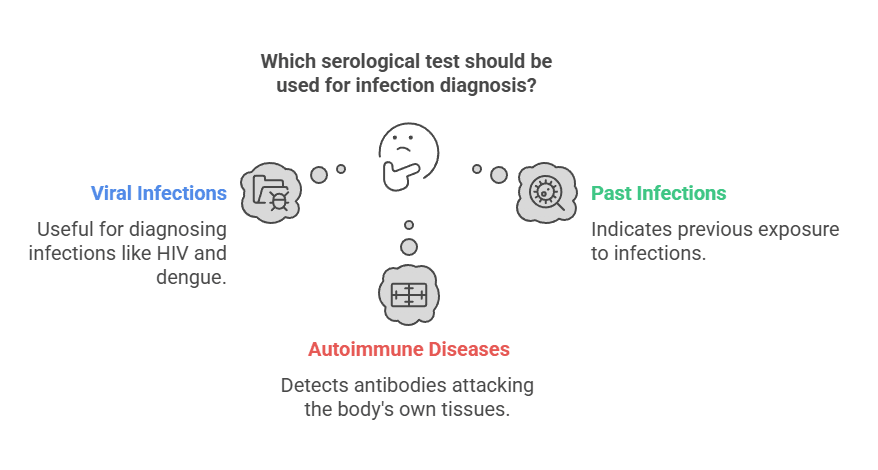
7. Molecular Tests (PCR) – Detecting the Pathogen’s Genetic Material
Polymerase Chain Reaction (PCR) tests are highly sensitive and specific tests that detect the genetic material (DNA or RNA) of the infecting organism.
- What it indicates: PCR tests can detect even very small amounts of the pathogen, making them useful for early diagnosis and for detecting infections that are difficult to culture.
- Common Uses: PCR is used to diagnose a wide range of infections, including:
- Tuberculosis (TB): PCR is used to detect Mycobacterium tuberculosis DNA in sputum or other samples.
- Viral Infections: PCR is used to detect viruses like HIV, hepatitis C, influenza, and COVID-19.
- Bacterial Infections: PCR can be used to detect bacteria that are difficult to culture or that require rapid identification.
Common Indian Lab Report Term: “PCR,” followed by the name of the pathogen being tested for (e.g., “TB PCR,” “COVID-19 PCR”).
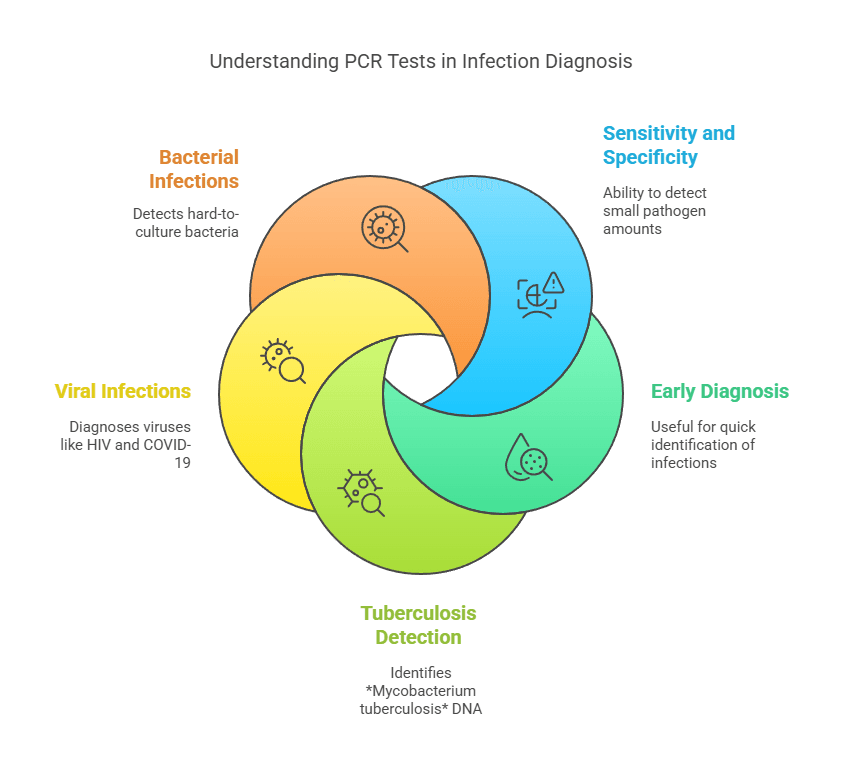
Understanding Your Test Results: Important Considerations
- Normal Ranges: Laboratory reports will usually provide “normal” or “reference” ranges for each test. It’s important to note that these ranges can vary slightly between different laboratories.
- Interpreting Results: Blood test results should always be interpreted by a qualified doctor. A single abnormal result doesn’t necessarily mean you have a serious infection. Your doctor will consider your symptoms, medical history, and other test results to make an accurate diagnosis.
- False Positives and False Negatives: No test is perfect. Sometimes, a test can give a false-positive result (indicating an infection when there isn’t one) or a false-negative result (failing to detect an infection that is present).
- Timing of the Test: The timing of the test can also affect the results. For example, antibody tests may not be positive in the very early stages of an infection.
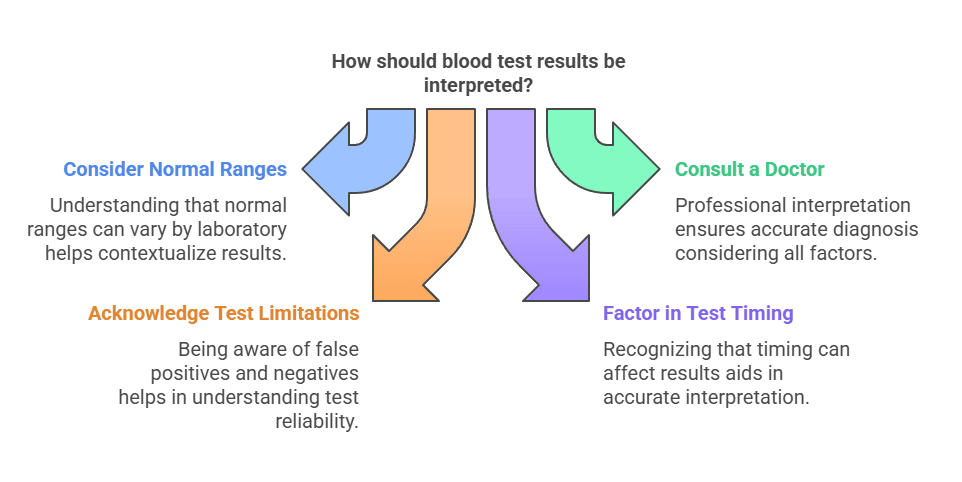
Frequently Asked Questions (FAQs) about Blood Tests for Infections in India
Empowering Yourself with Knowledge
Blood tests are essential tools for diagnosing and managing infections. By understanding the different types of tests and what they measure, you can be a more informed and proactive participant in your healthcare. Remember to always discuss your test results with your doctor, and don’t hesitate to ask questions. Early detection and appropriate treatment are key to a speedy recovery and a healthy life.

